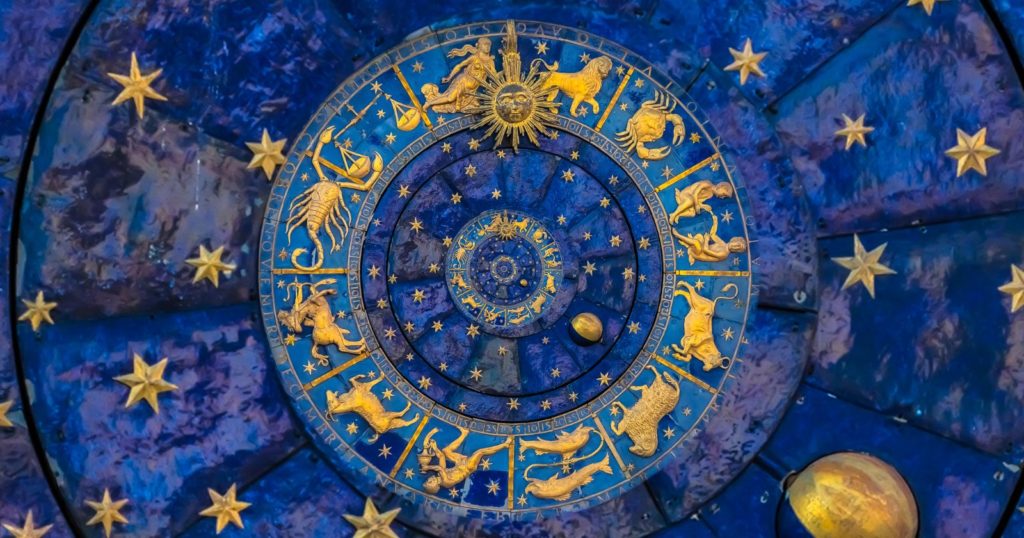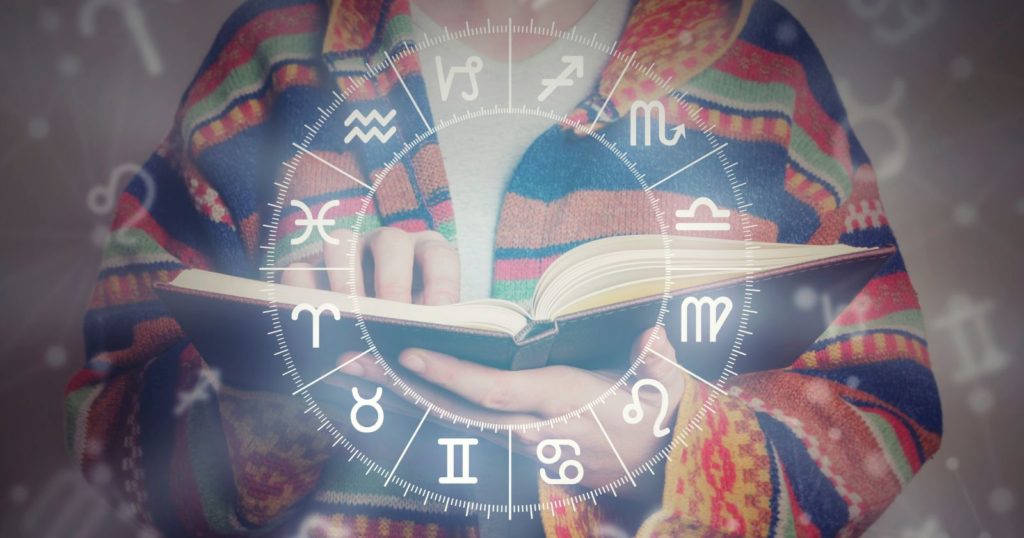When we gaze up at the star-studded sky on a clear night, we’re not just looking at a beautiful spectacle. For those versed in astrology, the sky represents a cosmic blueprint – a celestial map that, when deciphered, can unveil profound insights about our personalities, life path, relationships, and potential. This blueprint is encapsulated within an individual’s astrology chart birth, also known as a natal chart.
At its core, an astrology chart birth is a snapshot of the heavens at the precise moment of your birth, offering an intricate labyrinth of signs, houses, planets, and aspects. To the untrained eye, it might seem overwhelming, even chaotic. But with the right approach and understanding, these celestial enigmas can unfold like an epic cosmic novel, revealing the unique characteristics that define you.
Are you intrigued yet? Good! Because we’re about to embark on a celestial odyssey, guiding you through the seven essential steps to understanding your astrology chart birth. This journey will not only empower you with astrological knowledge but will also lead you to a deeper understanding of your own nature, challenges, and potential. From the positioning of the planets to the secrets of the twelve houses and the influences of the zodiac signs, this exploration into the world of astrology will be both enlightening and engaging.
So, fasten your seatbelts, or rather, adjust your telescope. We’re about to launch into the mesmerizing realm of the cosmos, understanding ourselves, our lives, and the universe from an entirely new perspective.
Step 1: Your Sun Sign – The Core of Your Astrological Identity
In the celestial symphony of an astrology chart birth, the Sun plays the leading role. As the most significant celestial body in our solar system, the Sun, in astrology, symbolizes the core of our identity – our ego, vitality, and the driving force behind our actions and decisions. Thus, knowing your Sun sign is the first critical step in understanding your astrology chart birth.
If you’ve ever been asked about your “zodiac sign” in casual conversations, you’ve actually been asked about your Sun sign. This sign is determined by the position of the Sun at the time of your birth. The zodiac is a celestial belt, consisting of 12 sectors – each represented by a distinct astrological sign. These signs are Aries, Taurus, Gemini, Cancer, Leo, Virgo, Libra, Scorpio, Sagittarius, Capricorn, Aquarius, and Pisces.
Your Sun sign represents the essential traits of your character, your natural strengths, and weaknesses. For example, if your Sun sign is Leo, you might possess a natural flair for leadership, a knack for creativity, and an inherent desire to be recognized and admired. On the other hand, a Taurus Sun sign may indicate a grounded, practical, and somewhat stubborn personality.
However, it’s important to note that while the Sun sign is crucial, it’s just a fraction of the complete astrological picture. One’s Sun sign may lay the foundation of their personality, but it doesn’t account for the myriad nuances and complexities that shape an individual’s character.
To gain a fuller understanding, we must also examine other influential factors in your astrology chart birth. This leads us to the Moon sign – your emotional blueprint, which represents the more private, instinctual aspects of your personality. But that’s a tale for the next chapter of our cosmic exploration.
Your Sun sign is the starting point in the journey of understanding your astrology chart birth. It provides a basic sketch of your personality but doesn’t provide the intricate details. The full cosmic blueprint – your natal chart – is like an intricate mosaic where each piece adds depth and detail to the complete picture.
Step 2: The Moon Sign – Unveiling Your Emotional Landscape
In the grand celestial ballet of an astrology chart birth, the Moon dances a poignant solo, wielding a profound influence on our emotions and subconscious mind. Understanding your Moon sign is therefore the second pivotal step in your astrological journey.
The Moon, in astrology, symbolizes the emotional responses, subconscious pre-dispositions, and instinctual behaviors that underpin the nuances of our character. Essentially, while the Sun sign corresponds to your conscious self, your Moon sign corresponds to your subconscious self, reflecting your emotions, intuition, and inner mood.
The position of the Moon in one of the twelve zodiac signs at the moment of your birth determines your Moon sign. This sign provides valuable insight into how you react to experiences emotionally, how you process your feelings, and what needs must be met for your emotional well-being.
For instance, if your Moon is in Cancer, a water sign ruled by the Moon itself, you might have a strong instinct for nurturing, a deep emotional sensitivity, and a strong attachment to home and family. On the other hand, a Moon in the fire sign of Aries might suggest an impulsive nature, a quick emotional response, and a passionate disposition.
It’s important to note, though, that your Sun and Moon signs may not always be in harmony. A Taurus Sun with an Aries Moon, for example, might experience a constant internal tug-of-war, with the steady, patient Taurus Sun frequently at odds with the impulsive, quick-to-react Aries Moon.
However, understanding this internal conflict, or harmonious symphony, depending on your Sun and Moon signs, is integral to self-awareness. It offers a nuanced understanding of your internal dynamics and can guide you towards emotional balance.
Step 3: The Ascendant – Your Astrological Mask
The third significant pillar in your astrology chart birth is your Ascendant, also known as the Rising Sign. This element plays a fundamental role in shaping your outward persona and the initial impressions you project onto the world. Understanding your Ascendant sign is therefore the third crucial step on your journey towards astrological literacy.
The Ascendant is the zodiac sign that was rising on the eastern horizon at the precise moment and location of your birth. Think of it as the ‘dawn’ of your life. This sign serves as the cusp of the first house in your natal chart – the house of self – and it sets the tone for the rest of your astrological houses.
Your Ascendant sign offers insight into how others perceive you, especially during first encounters. It’s like the mask you wear when you step into the world – not false, but certainly not the complete picture of your complex persona.
For instance, if you have a Libra Ascendant, you may project an image of harmony, diplomacy, and approachability, often drawing people towards you. If your Ascendant is Scorpio, you might present an air of mystery, intensity, and depth, arousing curiosity and intrigue in others.
The interplay between your Sun, Moon, and Ascendant signs creates a dynamic interplay in your personality. For example, a person with a Gemini Sun, Virgo Moon, and Libra Ascendant might exhibit a sociable and adaptable demeanor (Gemini Sun), have a detail-oriented and analytical emotional nature (Virgo Moon), and come across as charming and diplomatic during initial meetings (Libra Ascendant).
Step 4: Planets and Houses – The Cosmic Stage
Now that you’ve grasped the basics of your Sun, Moon, and Ascendant signs, it’s time to venture deeper into the intricacies of your astrology chart birth. Our fourth step involves understanding the role of planets and houses in your natal chart, which together form a grand cosmic stage.
The planets in your astrology chart birth represent different facets of your psyche, while the twelve houses correspond to various areas of your life. Each planet’s position in a specific zodiac sign and house at the time of your birth carries a unique significance. Essentially, the planet is the ‘actor’, the sign is the ‘role’, and the house is the ‘stage’.
For instance, Mars, known as the planet of action and desire, might be in the analytical sign of Virgo in the third house, associated with communication and intellect. This could indicate a person who channels their energy and drive (Mars) through detailed, critical thinking (Virgo) in the realm of communication, perhaps as a writer or editor (third house).
Understanding the planets’ meanings is crucial in this step. Here’s a brief overview:
- Sun: Your ego, core self
- Moon: Your emotions, subconscious
- Mercury: Your mind, communication
- Venus: Your affections, pleasures
- Mars: Your drive, energy
- Jupiter: Your growth, optimism
- Saturn: Your discipline, fears
- Uranus: Your innovation, rebellion
- Neptune: Your dreams, illusions
- Pluto: Your transformation, power
The twelve houses, on the other hand, represent life areas ranging from identity (first house) to career (tenth house) to friendships (eleventh house) to the subconscious (twelfth house), and everything in between.
As you explore the planetary positions and their house placements in your chart, you’ll start to see a multi-dimensional picture of your personality and life experiences emerge. Remember, astrology is not a tool for prediction, but a language of symbolism and archetypes that helps us understand ourselves and our lives more deeply.
Step 5: Aspects – The Cosmic Conversations
The journey through your astrology chart birth brings us to our fifth step: understanding the aspects. Aspects are the angular relationships between planets in your natal chart. They can be harmonious, enhancing the energies of the planets involved, or challenging, causing friction and tension.
Think of aspects as the cosmic conversations happening between different parts of your psyche (represented by the planets). These conversations reveal how the various facets of your personality interact, adding another layer of depth to your astrological understanding.
There are several types of aspects, each defined by a specific angle. The primary ones include conjunctions (0 degrees), sextiles (60 degrees), squares (90 degrees), trines (120 degrees), and oppositions (180 degrees). Each of these aspects carries a unique significance:
- Conjunction: The energies of the two planets blend and intensify. This can be harmonious or challenging, depending on the planets involved.
- Sextile: A harmonious aspect that denotes talents, opportunities, and ease of expression between the energies of the two planets.
- Square: A challenging aspect that indicates tension, conflict, or struggle between the energies of the two planets. However, it also drives growth and development.
- Trine: A very harmonious aspect that suggests natural talent, ease, and flow between the energies of the two planets.
- Opposition: A challenging aspect representing a tug-of-war between the energies of the two planets. It indicates areas of life where we need to find balance.
For example, if your chart shows a square aspect between Mars (action, drive) and Saturn (restriction, discipline), you might often feel like your ambitions and drive are thwarted by limitations or fear, causing frustration. However, this friction can also push you to work harder and develop resilience.
Step 6: Elemental Balances – Fire, Earth, Air, and Water
Our journey through the labyrinth of your astrology chart birth now leads us to the sixth step: understanding the elemental balances. Each of the twelve zodiac signs is associated with one of the four elements: Fire, Earth, Air, and Water. These elements provide us with a broad understanding of one’s temperament and preferences.
Fire signs (Aries, Leo, Sagittarius) are typically passionate, dynamic, and temperamental. They are action-oriented, courageous, and are often the ones to initiate new ventures.
Earth signs (Taurus, Virgo, Capricorn) are pragmatic, grounded, and they value material comfort. They are methodical, practical, and they excel in bringing ideas into tangible reality.
Air signs (Gemini, Libra, Aquarius) are intellectual, curious, and social. They are communicators, mediators, and they thrive on ideas, information, and relationships.
Water signs (Cancer, Scorpio, Pisces) are emotional, intuitive, and deeply connected to their inner world. They are sensitive, empathetic, and they value emotional connections and understandings.
Now, look at your astrology chart birth and count the number of planets in each element. A balance of elements in your chart indicates a balanced personality. For example, if you have an equal number of planets in Fire and Water signs, you might possess a good balance between intuition (Water) and action (Fire).
Conversely, an overemphasis on an element can indicate a propensity towards certain behaviors. For example, if your chart is heavy on Earth signs, you may be particularly pragmatic, detail-oriented, and grounded. A lack of an element can also be revealing. Lack of Air, for instance, might suggest challenges with objectivity or communication.
Step 7: Modalities – The Cosmic Modes of Operation
The final step in deciphering your astrology chart birth involves understanding the modalities, also known as the qualities. These modalities – Cardinal, Fixed, and Mutable – represent the different ways in which the signs of the zodiac express their energies. They provide insight into your modus operandi, indicating how you generally approach life’s challenges and opportunities.
Cardinal signs (Aries, Cancer, Libra, Capricorn) are initiators. They are action-oriented, ambitious, and like to get things started. They represent the beginning of each season and, therefore, embody the spirit of initiation and new beginnings.
Fixed signs (Taurus, Leo, Scorpio, Aquarius) are the stabilizers. They are determined, persistent, and value consistency. They fall in the middle of each season, signifying steadiness and endurance.
Mutable signs (Gemini, Virgo, Sagittarius, Pisces) are the adaptors. They are flexible, versatile, and embrace change. They represent the end of each season, embodying adaptability, flexibility, and the transition from one state to another.
To determine the dominant modality in your chart, count the number of planets in each of the modalities. An abundance of Cardinal signs may indicate a proactive nature and a tendency to initiate changes, whereas a dominance of Fixed signs might point to determination and a need for stability.
A balance of modalities leads to a more flexible and well-rounded personality. For instance, a mix of Cardinal and Mutable signs could suggest a person who is adept at both initiating projects and adapting to changing circumstances.
Understanding the modalities in your astrology chart birth offers an overarching perspective of your inherent tendencies and behavioral patterns. It completes the complex puzzle of your astrological profile, giving you a comprehensive view of your personality as depicted by the stars at your time of birth.
Remember, the goal of diving deeper into your astrology chart birth is not to define or limit you, but to serve as a tool for self-awareness and personal growth. It’s an invitation to explore the cosmic blueprint of your life and gain deeper insights into your unique identity. Reflect on your journey through these seven steps, and let the wisdom of astrology guide you towards greater self-understanding.
Resources:
- “The Only Astrology Book You’ll Ever Need” by Joanna Martine Woolfolk
- “Astrology for the Soul” by Jan Spiller
- “The Inner Sky: How to Make Wiser Choices for a More Fulfilling Life” by Steven Forrest




